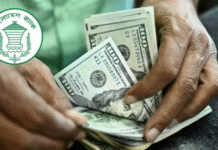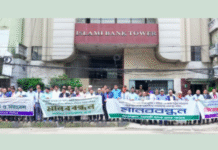It drops to 6-8% from the previous year’s double-digit figure
The inter-bank call money rate remained low throughout last year due to dull investment as banks were sitting with huge liquidity.
The rate hovered around 6-8% almost the whole year except January, compared to the double-digit rates during previous two consecutive years, according to Bangladesh Bank data.
In January, the call money rate was 10.29% while the spread was 5.13%.
After that, the rate began dropping as investment stagnated because of political turmoil.
It declined to the year’s lowest 7.03% in November with a spread of 4.95%.
Spread refers to the difference between weighted average interest rates on deposits and advances.
“The cheap call money rate is reflection of excess liquidity in banks,” said Ali Reza Iftekhar, managing director of Eastern Bank Ltd (EBL).
He said although this was a reflection of a sluggish investment situation, cheap rate could also be positive for the banking industry.
“Cheap rate suggests there is no crisis in deposits. It is also an indicative of poor investment,” said EBL’s MD, adding that investment is important for economic growth, and at the same time, cheap call money rate is also positive for banking sector.
“Interest rate against deposits also went down because of excess liquidity. Fixed deposit interest rate decreased to single-digit last year frommore than 12%,” said Ali Reza Iftekhar, who has recently been elected chairman of Association of Bankers Bangladesh (ABB).
Bangladesh Bank data showed in 2012 the call money rate peaked at 19.66% while the lowest point was 9.81%.
Banks’ excess liquidity increased 50% to Tk90,000 crore in November from Tk60,000 in January, said the central bank. Last year just ahead of Eid-ul-Fitr festival, call money rate slightly increased to 8%. But such rates were as high as 20-22% during previous Eid festival.
The demand of money from the clients usually goes up before the largest Muslim festival Eid, which pushes up the rate. High remittance inflow and less imports have also contributed to the increased liquidity in banks.
“While investments remain dull, remittance continues to grow, and imports have fallen. All these factors have createdhuge idle money in the banks, keeping bank-to-bank lending rate stable instead of its seasonal upswing,” said a senior official of Bangladesh Bank.
He said the banks were also cautious in disbursing loans after revealing of credit scams.
Bangladesh Bank’s Chief Economist Hassan Zaman said the central bank intervenes in the call money market when it does not reflect the real situation of the banks. “But the current rates do project the real situation.”
Source: Dhaka Tribune









